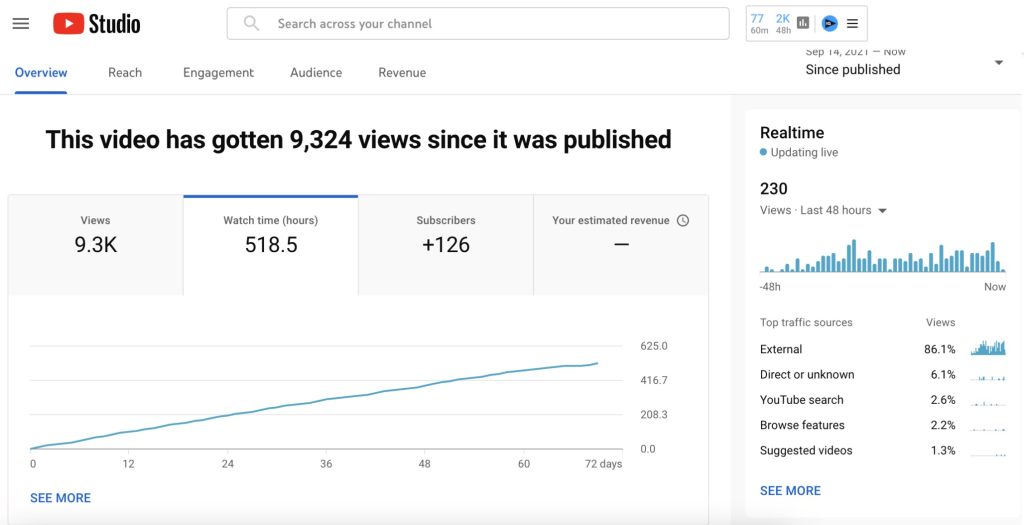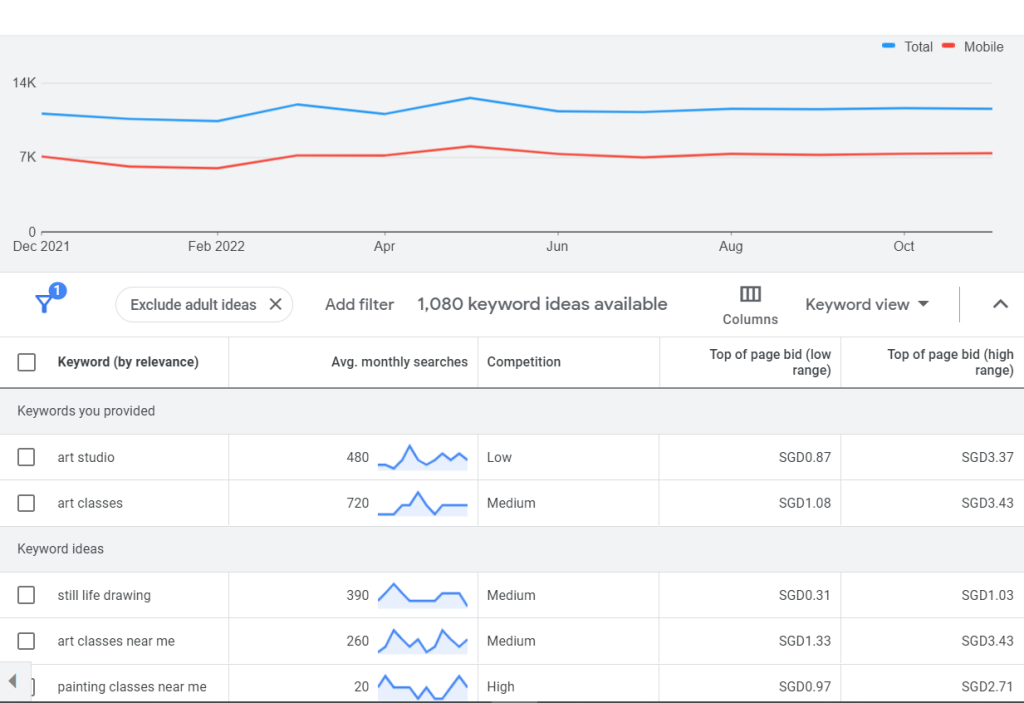How to do youtube video seo
YouTube has evolved from being a mere video-sharing platform to a colossal search engine in its own right. With millions of videos uploaded daily, it’s crucial for content creators to understand the importance of YouTube Video SEO. In this article, we will unravel the intricacies of YouTube Video SEO and equip you with advanced strategies to increase your video’s visibility, attract more viewers, and grow your channel’s subscribers.
Understanding YouTube Video SEO
YouTube Video SEO refers to the practice of optimizing your videos and channel to rank higher in YouTube‘s search results. Proper optimization not only helps your content reach a broader audience but also increases your video’s chances of appearing in Google search results.
1. Keyword Research
Video Keyword Selection: Begin by researching and selecting relevant keywords for your video. These keywords should reflect the content, intent, and audience of your video.
Use Tools: Leverage keyword research tools like Google Keyword Planner, YouTube’s Autocomplete feature, or third-party tools to identify high-traffic, low-competition keywords.
2. Optimize Video Titles and Descriptions
Keyword-Rich Titles: Craft compelling video titles that include your primary keyword. Ensure they are descriptive and engaging to entice clicks.
Detailed Descriptions: Write detailed video descriptions that elaborate on the content. Include relevant keywords and provide links to your website or related videos.
3. Engaging Thumbnails
Eye-Catching Thumbnails: Design visually appealing custom thumbnails that grab viewers’ attention. Thumbnails should accurately represent your video’s content.
Consistent Branding: Maintain consistency in your thumbnail design to reinforce your brand identity.
4. Tags and Metadata
Tag Optimization: Use relevant tags that reflect the content and keywords of your video. Include a mix of broad and specific tags.
Video Categories: Select the appropriate video category to help YouTube understand your content better.
5. Video Length and Quality
Quality Content: Create high-quality, engaging videos that keep viewers watching until the end. YouTube values watch time, and longer videos (if they hold viewers’ interest) tend to rank better.
Viewer Retention: Focus on viewer retention by crafting compelling introductions and delivering valuable content throughout your video.
6. Closed Captions and Transcriptions
Closed Captions: Enable closed captions for your videos. Not only does this improve accessibility, but it also provides search engines with text to index.
Transcriptions: Include video transcriptions in the description or as a separate file. Transcriptions make your content accessible to a wider audience and can boost SEO.
 7. Engage with Your Audience
7. Engage with Your Audience
Encourage Interaction: Encourage viewers to like, comment, and share your videos. Engagement signals are valuable for SEO.
Respond to Comments: Engage with your audience by responding to comments and fostering a sense of community on your channel.
8. Video Playlists
Organize Content: Create video playlists that group related content together. This enhances the user experience and keeps viewers on your channel longer.
Playlist Titles and Descriptions: Optimize playlist titles and descriptions with relevant keywords.
9. Promote Your Videos
Cross-Promotion: Promote your videos on your other social media platforms, your website, and in your email newsletters.
Collaborations: Collaborate with other YouTubers in your niche for cross-promotion and increased visibility.
10. Monitor Analytics and Iterate
Analytics Insights: Regularly review YouTube Analytics to gain insights into video performance, audience demographics, and viewer behavior.
Iterate and Improve: Use analytics data to iterate and improve your future video content and SEO strategies.
11. Video Timestamps
Timestamps in Description: Include timestamps in your video description to help viewers quickly navigate to specific sections of your video. This not only enhances user experience but also improves SEO.
12. Engage in YouTube Communities
YouTube Community Tab: Utilize the YouTube Community tab to engage with your audience. Share polls, updates, and behind-the-scenes content to foster a sense of community and keep viewers returning to your channel.
13. Video End Screens and Cards
End Screens: Use end screens to promote related videos, playlists, and encourage viewers to subscribe or take other actions after watching your video.
Cards: Implement cards throughout your videos to link to related content or external websites. This can help increase viewer retention and drive traffic to your website.
14. YouTube Live and Premieres
Live Streaming: Consider hosting live streams on YouTube. Live videos often receive higher engagement, and YouTube tends to promote live content.
Premieres: Premiere your videos to create anticipation and encourage viewers to join the video launch at a specific time. Live chat during premieres can boost engagement.
15. Video Captions and Language Optimization
Multilingual Captions: If your audience is global, consider adding captions in multiple languages to broaden your video’s reach.
Language Optimization: Research keywords in different languages to optimize your video titles, descriptions, and tags for international audiences.
16. Create Compelling Playlists
SEO-Friendly Playlists: Craft playlists with SEO-friendly titles and descriptions. Use playlists to organize your content by topic or theme, making it easier for viewers to find related videos.
17. Video Embeds and Backlinks
Embed on Website: Embed your YouTube videos on your website or blog posts. This not only provides additional visibility but also creates backlinks to your YouTube content.
Backlinks: Promote your videos on relevant forums, blogs, or other websites within your niche. High-quality backlinks can boost your video’s authority.
18. Monitor Video Trends
Stay Updated: Keep an eye on trending topics and current events within your niche. Creating timely content can help you tap into trending searches and boost your video’s visibility.
19. Utilize YouTube Shorts
Short-Form Videos: Experiment with YouTube Shorts, which are short-form vertical videos. These can help you reach a younger audience and may appear in the YouTube Shorts shelf.
20. A/B Testing Video Thumbnails
Thumbnail Testing: Periodically test different video thumbnails to see which ones perform best. YouTube allows you to A/B test thumbnails to determine the most engaging option.
21. Use YouTube Analytics
Audience Retention: Analyze audience retention reports to identify the exact points in your videos where viewers tend to drop off. Optimize your content to maintain engagement throughout.
Traffic Sources: Study traffic source data to understand where your viewers are discovering your videos. Focus your promotion efforts on channels that drive the most traffic.

22. Trend Analysis and Seasonal Content
Leverage Seasonal Trends: Create content that aligns with seasonal trends, holidays, or special events. These videos can attract more viewers during specific times of the year.
Trend Analysis Tools: Use trend analysis tools to identify upcoming trends and keywords related to your niche. Stay ahead of the curve by producing content that matches emerging trends.
23. Video Script Optimization
Transcribe Your Script: Write a detailed script for your video and ensure it includes target keywords naturally. Transcribing your spoken content can help improve keyword relevance.
Use Keyword Variations: Incorporate variations of your target keywords throughout the script to capture a wider range of search queries.
24. Social Sharing and Engagement
Social Media Promotion: Share your videos across your social media channels and encourage your followers to engage with your content on YouTube. Social signals can indirectly impact YouTube SEO.
Engage with Comments: Actively engage with comments on your videos. Respond to questions, acknowledge feedback, and foster discussions to boost viewer engagement.
25. Utilize YouTube Shorts and Stories
YouTube Shorts: Experiment with YouTube Shorts, which are designed for short-form, vertical video content. These can appear in the YouTube Shorts shelf and attract a younger audience.
YouTube Stories: If you have access to YouTube Stories, use them to share brief updates, teasers, and behind-the-scenes content to engage with your audience between video uploads.
26. Competitive Analysis
Analyze Competitor Videos: Study the videos of your competitors in your niche. Identify what keywords and strategies they are using successfully, and adapt your approach accordingly.
27. Optimize End Screens and Annotations
End Screen Optimization: Make the most of end screens by featuring related videos or playlists. Encourage viewers to continue watching your content.
Annotations: Use annotations strategically to link to other relevant videos or subscribe prompts within your video.
28. YouTube Premiere Strategy
Create Hype: Build anticipation for your videos by scheduling premieres. Promote the premiere time and engage with viewers in the live chat during the premiere.
Encourage Subscriptions: Use premieres as an opportunity to encourage viewers to subscribe to your channel.
29. Collaborate with Other Creators
Collaboration Videos: Collaborate with other YouTubers or creators in your niche. Collaborative videos often attract new subscribers from your partner’s audience.
30. Invest in High-Quality Production
Production Value: High production value, including good lighting, audio, and video quality, can positively impact viewer retention and the likelihood of viewers engaging with your content.
31. Create and Optimize Playlists Continuously
Regular Playlist Updates: Keep your playlists up to date by adding new videos regularly. Well-organized playlists can keep viewers engaged on your channel longer.
32. Monitor Video Metrics
Click-Through Rate (CTR): Track your video’s CTR in YouTube Analytics. A higher CTR can indicate that your thumbnail and title are compelling.
Audience Engagement: Monitor likes, comments, shares, and watch time to gauge how well your content resonates with viewers.
Mastering YouTube Video SEO involves a combination of creativity, technical optimization, and audience engagement. By implementing these advanced strategies and continually refining your approach, you can improve your video’s search rankings, grow your subscriber base, and create a lasting impact in the world of online video content.

YouTube Video SEO is a dynamic field that demands creativity, consistency, and adaptability. By implementing these advanced strategies and staying attuned to YouTube’s algorithm updates and user trends, you can position your channel for long-term success.
Always remember that audience engagement and value should be at the core of your content strategy. Providing meaningful, relevant, and high-quality content is the key to not only improving your video’s search rankings but also building a loyal and growing subscriber base.
As you continue to refine your YouTube Video SEO tactics, your channel can thrive in the competitive world of online video, attracting more viewers, subscribers, and opportunities for monetization.
how youtube video help in seo
YouTube videos have evolved from mere entertainment to a vital asset for SEO success. Integrating video content into your online strategy can improve user engagement, enhance your website’s visibility in SERPs, and generate valuable backlinks. YouTube’s status as the second-largest search engine further underscores its importance in the digital landscape.
To leverage the full potential of YouTube for SEO, it’s essential to create high-quality, keyword-optimized videos, engage with your audience, and maintain a consistent presence. As you harness the power of YouTube videos, you’ll discover that they not only complement your SEO efforts but also provide a unique avenue for expanding your online presence and reaching a broader audience.
In an era where visual content reigns supreme, embracing YouTube as a strategic SEO tool can lead to significant gains in online visibility and rankings, ultimately driving the success of your digital endeavors.
1. Video Content: A Game-Changer in SEO
Video content has become the preferred choice for online consumption. Here’s how YouTube videos contribute to SEO success:
2. Enhanced User Engagement
Lower Bounce Rates: Websites with embedded YouTube videos tend to have lower bounce rates. Engaging videos keep visitors on your site longer, signaling to search engines that your content is valuable.
Improved Dwell Time: High-quality videos can substantially increase the time visitors spend on your site, a positive SEO signal.
3. Rich Media Results in SERPs
SERP Presence: Google often displays video results in its search pages. Having video snippets in search results can boost your website’s visibility and click-through rates.
4. Backlinks and Social Signals
Natural Backlinks: Compelling videos are more likely to be shared and linked to from other websites, providing valuable backlinks.
Social Sharing: Sharing videos on social media platforms enhances social signals, indirectly impacting SEO.
5. YouTube’s Own Search Engine
Second Largest Search Engine: YouTube is the second largest search engine after Google. Optimizing your videos for YouTube SEO means tapping into a massive audience actively searching for content.
6. Keyword Optimization
Keyword-Rich Titles and Descriptions: Utilize relevant keywords in video titles and descriptions. Include long-tail keywords to capture specific search queries.
Tags and Metadata: Tag videos with appropriate keywords and optimize video metadata for better discoverability.
7. Captions and Transcripts
Accessibility: Captions make your videos accessible to a broader audience, including those with hearing impairments.
SEO Boost: Transcriptions and captions provide text content for search engines to index, contributing to SEO.
8. Engage and Interact with Viewers
Comments and Feedback: Engaging with viewers through comments and feedback fosters a sense of community and can drive more interaction.
Call to Action (CTA): Use video CTAs to encourage viewers to like, share, subscribe, or visit your website.
9. Consistency and Quality
Regular Content Updates: Consistently uploading high-quality videos can keep your audience engaged and coming back for more.
Positive User Experience: A well-designed YouTube channel with organized playlists and clear branding enhances the user experience.
10. Mobile Optimization
Mobile-First: YouTube is accessed on various devices. Ensure your videos are mobile-friendly for a seamless user experience.
YouTube Video SEO is a powerful tool that can propel your channel to new heights of success. By meticulously optimizing your videos, engaging your audience, and continually improving your content, you can increase your video’s visibility, attract more viewers, and grow your subscriber base.
Remember that YouTube SEO is an ongoing process. Stay up-to-date with YouTube’s algorithm changes, industry trends, and audience preferences to maintain your channel’s growth and relevance in the ever-competitive world of online video content.






